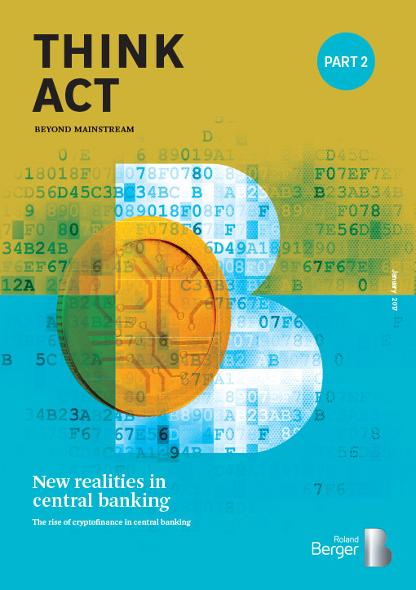New realities in central banking: The rise of cryptocurrency
![{[downloads[language].preview]}](https://www.rolandberger.com/publications/publication_image/roland_berger_tab_2016_the_rise_of_cryptocurrency_download_preview.jpg)
2017 is heralded as the dawn of digital currencies in the financial services industry.


Minting a central bank digital currency: Roland Berger envisions the emerging digital future. 2017 is heralded as the dawn of digital currencies in the financial services industry. Amid all the hype, it is important to sift through and identify the key messages relevant in the world of finance.
In our previous THINK ACT edition, New realities in central banking: The organizational challenge , we examined the structural changes and transformation necessary for central banks to become high performance organizations.
In this edition, we reveal the impact of digital currencies on central banks, explain the underlying technologies, and make recommendations for central banks in the digital age. In order for central banks to maintain relevancy into the future, they are tasked with evaluating the development of a central bank digital currency. Central banks need to follow a clear five step roadmap – from the first vision to the national rollout.
Having currency represented in a digital manner is nothing new. In fact, this has been the case since the digitization of communications. At present, in developed markets nearly all money is held and exchanged by digital means in the form of information and only a small percentage of all money in circulation exists in physical form. While a central bank digital currency will not completely replace physical notes and coins any time soon, adoption rates are difficult to predict. There can be no doubt that these digital technologies are here to stay.

![{[downloads[language].preview]}](https://www.rolandberger.com/publications/publication_image/roland_berger_tab_2016_the_rise_of_cryptocurrency_download_preview.jpg)
2017 is heralded as the dawn of digital currencies in the financial services industry.
